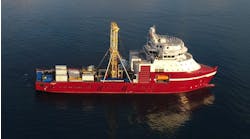Offshore staff
HOUSTON – Petrotechnical Data Systems (PDS) has expanded its collaboration with the University of Leeds in northern England to support joint technology development.
PDS has acquired exclusive rights to commercialize two sedimentary analogue databases, the Shallow-Marine Architecture Knowledge Store (SMAKS) and the Deep-Marine Knowledge Transfer System (DMAKS), both compiled by researchers at Leeds.
The databases incorporate quantitative and descriptive data from the scale of sedimentary facies to the depositional architecture of sequences in shallow-marine and deep marine environments (SMAKS and DMAKS, respectively).
They are said to complement the Fluvial Architecture Knowledge Transfer System (FAKTS) database that is currently available through PDS’ Ava Clastics analogue database and clastic sedimentology software.
“By working with PDS we can deliver workflows across environments of deposition in ways that are immediately meaningful togeoscientists,” said Professor Dave Hodgson, director, Shallow Marine Research Group, at the university.
Ava Clastics applies the latest data and ideas from academia to clastics reservoir modeling, heloing to convert geological analogues into parameters for facies modeling algorithms.
FAKTS, SMAKS, and DMAKS will all support clastic geomodeling in its target sedimentary environment while the ability to use all three-databases together should result in an integrated modeling platform across environments.
“This will enable users to interrogate the data intelligently, posing ‘what if’ questions to improve geomodeling accuracy,” said Professor Bill McCaffrey, Director, Turbidites Research Group at the university.
Steve Daum, Group Managing Director of Petrotechnical Data Systems, added: “Collaboration between academia and industry partners is vital for the acceleration of technology application in upstream E&P workflows.
“Augmenting and enhancing them with intuitive workflows will help E&P operators improve their ability to predict what lies between their wells, reducing uncertainty through geologically-grounded facies-modeling algorithms.”
04/05/2017


